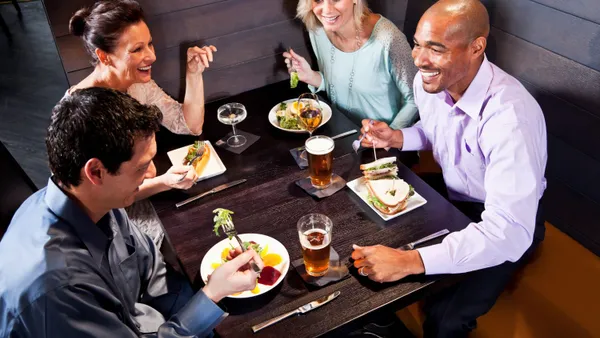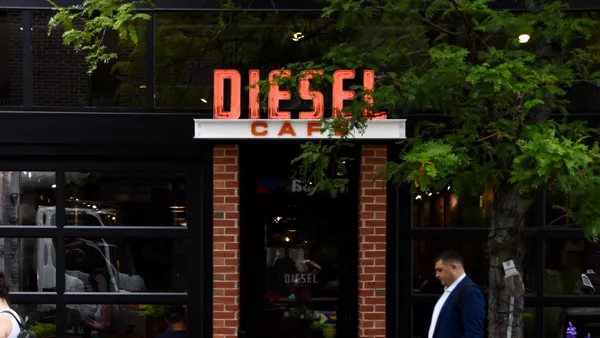Dive Brief:
- Roughly half (51%) of consumers have used a restaurant's website to place an online order in the past month, while 38% have used an online order aggregating service like Grubhub, according to Toast's Restaurant Success in 2019 industry report.
- Twenty-nine percent of guests surveyed have used a restaurant or food ordering service like LevelUp some time in the last month.
- The study concluded that customers are platform-loyal, with Uber Eats, Grubhub and DoorDash capturing 82% of guests' orders via delivery among those surveyed. In the past year, guests ordered the most on Uber Eats.
Dive Insight:
Online food orders have increased in recent years on both third-party services as well as restaurant-specific apps. Diners tend to place a few online orders each month and seem to enjoy having a variety of options when it comes to how they place that order and how it gets to their dining table, according to the study. This means that restaurants may have to consider offering in-house mobile app ordering as well as partnering with a third-party aggregator in order to truly cover their digital bases.
Customers' preference for placing orders directly through a restaurant's site bodes well for restaurants looking to skip paying third-party commission rates. A few restaurants have spearheaded online ordering through a mobile app. Chipotle has offered a variety of promotions to improve its app downloads, including offering free food. It recently opened "Chipotlanes" as a dedicated way for diners to pick up app-based orders without having to wait inside. Cava and Blaze Pizza are testing similar concepts to help expedite online orders.
Other chains are banking on apps to build customer loyalty, particularly through rewards programs. Bakery chain Paris Baguette has launched a mobile app that features rewards for orders placed through the app, while Starbucks' app has a variety of features tied to its loyalty program, including online ordering and information about traceability for its coffee beans. Dunkin' recently began accepting multi-tender payments through its mobile app. The coffee chain also partners with Grubhub, recently using the service's geofencing to optimize its NYC deliveries.
Smaller restaurants may not have the financial means to develop an app in-house or to retain a tech company's services to do the job. This makes third-party aggregators a popular option because the restaurant can still offer online ordering and delivery to compete with major players in the area. Third-party aggregator services can also help a restaurant gain exposure to new customers in the region that are surfing offerings on the app.
Competition among the third-party ordering services is getting fiercer, with each service adding new features and expanding into new territories in a bid to outdo the others. Uber Eats is contemplating a dine-in option that allows users to place an order but still eat in the restaurant, while Postmates recently added 1,000 new cities to its platform to reach each state in the U.S. DoorDash raised another $600 million in its latest funding round. Online reservation service OpenTable also recently moved into the delivery realm with a new in-app feature.













